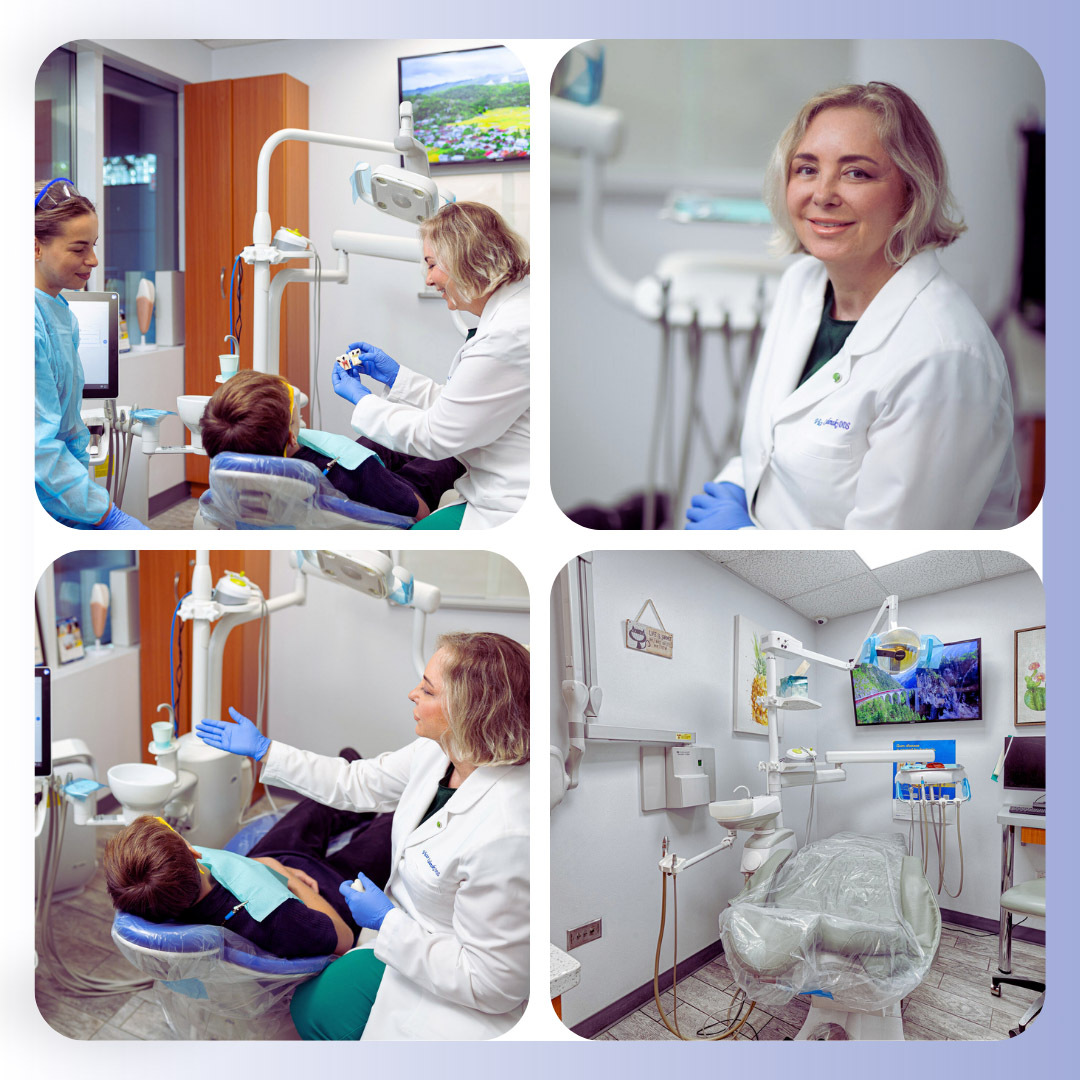Comprehending Common Oral Treatments: What Your Dental practitioner Can Do for You
Several people are uninformed of the various oral treatments offered to them. Comprehending these procedures can greatly affect dental health and wellness and total well-being. From regular cleansings to more complicated therapies like root canals, each solution plays a necessary role. People frequently overlook the significance of specialist advice in these matters. What details procedures could boost your smile and address your distinct oral needs? Discovering these choices might reveal unusual remedies.
Regular Dental Cleanings
Routine oral cleanings are vital for keeping optimal dental health. These preventative consultations, normally recommended every 6 months, assistance remove plaque and tartar buildup that routine cleaning and flossing may miss out on. Throughout a cleaning, an oral hygienist utilizes specialized devices to thoroughly clean teeth, making certain that both noticeable surfaces and hard-to-reach locations are resolved.
This procedure not only advertises healthier gums but additionally decreases the threat of cavities and periodontal disease. Complying with the cleaning, a thorough examination by the dental expert may determine very early indications of prospective concerns. Fluoride therapies are commonly applied post-cleaning to enhance enamel and shield versus decay.
People may also obtain tailored suggestions on enhancing dental health routines. Overall, regular dental cleanings play a considerable function in preventing dental troubles and maintaining a brilliant, healthy and balanced smile, reinforcing the relevance of regular sees to the dental professional.
Fillings for Cavities
Dental fillings for dental caries are a common oral treatment intended at repairing dental caries. Different filling up products, such as amalgam, composite material, and gold, offer various advantages and considerations. Understanding the loading procedure and correct aftercare can aid individuals maintain their dental health properly.
Sorts Of Filling Up Products

Loading Procedure Introduction
A dental caries filling procedure usually involves numerous essential actions to assure effective therapy and client comfort. Initially, the dental professional will certainly analyze the afflicted tooth and might take X-rays to examine the level of decay. Next, regional anesthetic is provided to numb the area, ensuring the patient feels minimal pain during the treatment. The dental practitioner after that utilizes customized devices to remove the decayed portion of the tooth, cleaning the dental caries completely. Afterward, the chosen filling product is positioned, shaped, and polished to restore the tooth's feature and look. Ultimately, the dental practitioner gives directions for post-treatment care and might set up a follow-up visit to keep track of the filling. This treatment helps stop further decay and preserves dental health and wellness.
Aftercare and Maintenance Tips
Adhering to the filling up treatment, proper aftercare and maintenance are important for ensuring the durability of the dental filling and the health and wellness of the tooth. Clients need to avoid eating sticky or tough foods for a minimum of 24-hour to allow the filling to set appropriately. Maintaining excellent oral health is important; cleaning twice daily and flossing frequently will help protect against future decay. It is recommended to make use of a soft-bristle tooth brush to avoid irritating the dental filling. In addition, regular dental check-ups are necessary, as dental professionals can keep an eye on the dental filling's problem and attend to any emerging problems. If clients experience level of sensitivity or pain, they should consult their dentist quickly to stop issues. Sticking to these guidelines can significantly enhance the durability of oral fillings.
Origin Canal Treatment
Root canal therapy is a common treatment made to conserve a tooth that is seriously rotted or infected. During this procedure, a dentist removes the infected pulp from the tooth's inside, which eases discomfort and protects against more infection. After cleansing and sanitizing the hollow space, the dental practitioner loads it with a biocompatible material to seal the location. This procedure typically needs 1 or 2 gos to, depending upon the severity of the tooth and the infection's problem.
Post-treatment, individuals might experience moderate pain, which is commonly convenient with non-prescription discomfort reducers. Proper oral health, including routine brushing and flossing, is essential for preserving the health and wellness of the treated tooth. In most cases, a crown may be positioned on the tooth to recover its stamina and capability. Root canal treatment successfully preserves all-natural teeth, adding to total dental wellness and stopping more extensive treatments in the future.
Tooth Removals

Factors for Tooth Removal
Dental extractions are a typical treatment in modern-day dental care, often required by different underlying concerns. One key reason for extraction is extreme tooth decay that compromises the stability of the tooth past repair work. Periodontal illness can additionally cause tooth wheelchair, prompting the requirement for extraction to avoid further problems. Additionally, overcrowding in the mouth might need the removal of teeth to help with placement, particularly prior to orthodontic therapy. Influenced knowledge teeth often call for removal to alleviate discomfort and avoid infection. Sometimes, extraction is essential for teeth that have endured distressing injury or fractures. Eventually, the choice for removal is made to assure general oral health and protect against problems that can affect bordering cells and teeth.
The Removal Refine
When a tooth extraction is deemed essential, the procedure typically begins with a comprehensive analysis by the dental professional. This analysis includes assessing the client's case history and carrying out a dental assessment, typically come with by X-rays to figure out the tooth's condition and its origins' structure. As soon as the analysis is complete, the dental professional will discuss the treatment, consisting of anesthesia alternatives to assure the patient's comfort. The removal might be executed using either a simple strategy for noticeable teeth or a surgical approach for impacted teeth. After the tooth is eliminated, the dental practitioner will certainly provide directions pertaining to instant care and resolve any prospective difficulties. This careful strategy helps to guarantee a smooth extraction process and promotes excellent healing.
Post-Extraction Care Tips
After a tooth removal, correct care is vital for facilitating recovery and decreasing discomfort. Clients must attack down gently on a gauze pad for at least 30 mins to regulate bleeding and advertise embolisms development. Cold pack can be applied to the outside of the face to reduce swelling during the very first 1 day. It is suggested to avoid arduous activities and to keep the head raised to reduce swelling. Soft foods need to be eaten, and warm, spicy, or tough foods need to be stayed clear of for several days. Preserving oral hygiene is essential; nonetheless, individuals should avoid rinsing their mouths strongly for the first 1 day. Adhering to these standards can significantly boost recuperation and convenience after a tooth extraction.
Dental Crowns and Bridges
Although numerous people may not realize it, pop over here crowns and bridges are important parts in restorative dental care that assist bring back both feature and appearances to damaged or missing teeth. Crowns, often described as caps, encase a damaged tooth to give toughness and boost its appearance. They are generally made from materials such as porcelain, steel, or a combination of both, guaranteeing sturdiness and an all-natural appearance.
Bridges, on the other hand, are utilized to change several missing out on teeth by securing man-made teeth to adjacent healthy teeth. This not only fills the void yet likewise stops surrounding teeth from changing, keeping proper positioning. Both procedures need cautious preparation and exact implementation by oral specialists, ensuring optimal results. People can anticipate boosted oral feature and boosted smiles, making bridges and crowns crucial choices for those looking this page for corrective oral options.
Pearly Whites Bleaching Options
Corrective dentistry not only concentrates on fixing harmed teeth but likewise on enhancing the total appearance of smiles, which brings teeth bleaching options into factor to consider (Pediatric Dentist). Dentists use various methods to attain a brighter smile, including at-home kits and in-office therapies
In-office whitening uses high-concentration bleaching representatives, often activated by light, giving instant outcomes. This method is monitored by an oral expert, making certain security and effectiveness. Alternatively, at-home packages generally include reduced focus of bleaching representatives and need consistent use over a duration of time for noticeable results.
In addition, dental experts may supply customized trays for home applications, enabling a much more customized technique. It is vital for people to speak with their dental professional to figure out the most ideal choice based on their oral background and individual preferences (Teeth Whitening). Ultimately, teeth bleaching can substantially improve aesthetic appeals, boosting confidence and overall satisfaction with one's smile
Frequently Asked Concerns
How Commonly Should I See the Dental Practitioner for Routine Check-Ups?
The majority of dental professionals advise visiting the dental practitioner for regular check-ups every 6 months. This regularity helps to preserve oral wellness, enabling early detection of prospective issues and prompt precautionary treatment to avoid more serious complications.
What Are the Indications I Required a Dental Procedure?
Indicators showing the requirement for an oral treatment include persistent tooth pain, sensitivity to hot or cold, visible dental caries, puffy gum tissues, halitosis, and difficulty eating. Prompt interest can stop further complications and ensure dental wellness.
Can Dental Procedures Be Done on Children?
Yes, dental treatments can be carried out on kids. Dentists are trained to deal with pediatric cases, ensuring that therapies are safe and ideal for a youngster's age and oral advancement, attending to both preventative and restorative needs properly.
Are Dental Treatments Agonizing, and Just How Is Discomfort Managed?
Dental treatments can cause pain, yet pain management strategies, such as local anesthesia, sedation, and post-operative treatment, are used to ensure individual comfort. A lot of people report convenient degrees of discomfort during and after treatment.
What Should I Expect During My First Dental Go To?
During the very first dental browse through, patients can anticipate a comprehensive exam, consisting of clinical history testimonial, dental X-rays, and a discussion of oral health and wellness. The dental expert will examine requirements and describe potential therapy alternatives relocating ahead.
Tooth extractions are a common dental procedure performed for numerous factors, such as serious decay or congestion. One main reason for removal is extreme tooth degeneration that jeopardizes the integrity of the tooth past repair. The extraction might be executed utilizing either a straightforward method for visible teeth or a surgical technique for impacted teeth. Bridges, on the various other hand, are utilized to replace one or more missing out on teeth by anchoring artificial teeth to surrounding healthy teeth. Restorative dental care not only concentrates on repairing damaged teeth yet likewise on enhancing the total appearance of smiles, which brings teeth whitening choices into factor to consider.